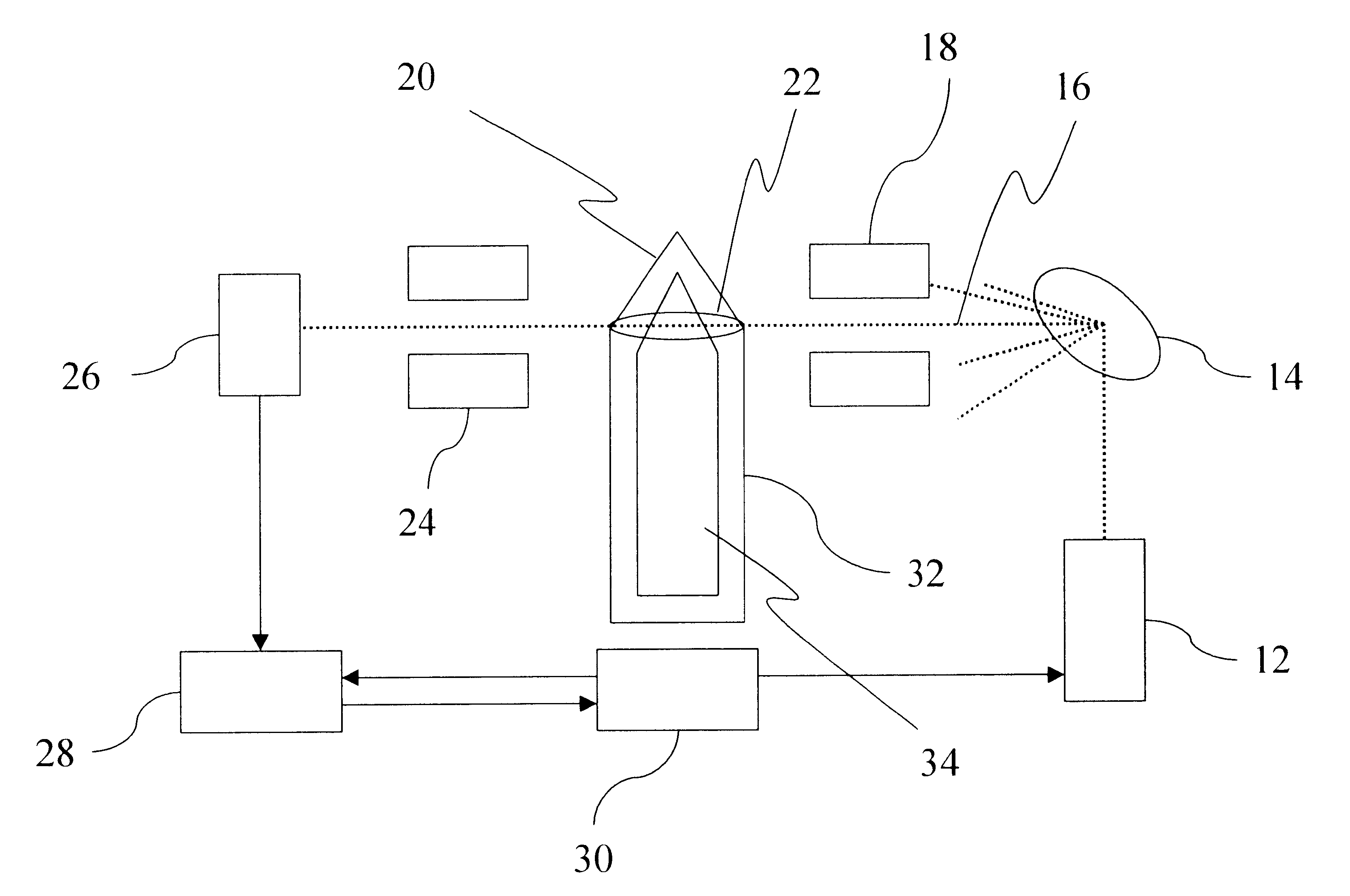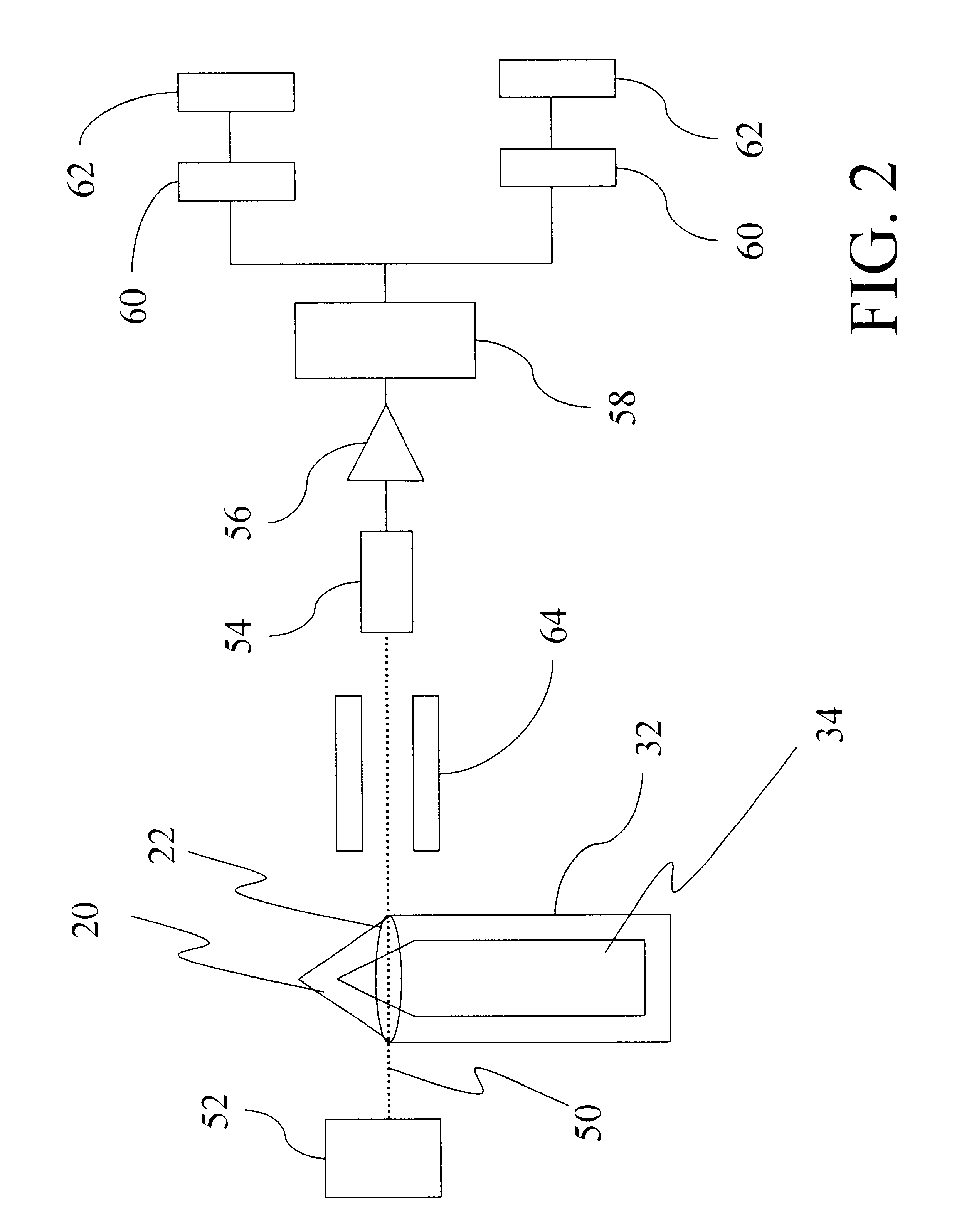Method for non-intrusively identifying a contained material utilizing uncollided nuclear transmission measurements
- Summary
- Abstract
- Description
- Claims
- Application Information
AI Technical Summary
Problems solved by technology
Method used
Image
Examples
embodiment 1 adapted
to Gamma-ray Measurement Transmissions
first embodiment
the present method is also valid for non-interacting photon measurements, wherein a gamma beam is used to interrogate the chemical munition 20, rather than neutron transmissions. FIG. 2 illustrates the apparatus appropriate for practicing the present embodiment, which is based on the assumptions, principles, and chemical munition construction described in the Detailed Description of the Invention above. Two gamma-ray beam energies are selected for conducting the non-interacting photon transmission measurements.
A first set of two gamma-ray transmission measurements is conducted at the first and second selected gamma-ray beam energies, by passing a gamma-ray beam through the chemical agent 20 along a selected transmission path at a selected cross-section 22, such that the gamma-ray beam passes through the chemical agent containment area 34 containing a void space, and by detecting the corresponding non-interacting photon transmission responses. Next, the chemical munition 20 is re-ori...
embodiment 2
The Two Energy CA Algorithm
In a second embodiment, a Two Energy CA Algorithm is applied, such that neutron transmission measurements through a void space and rotation of the chemical agent are not required. The Two Energy CA Algorithm utilizes the total path length relationship to eliminate unknown variables to derive a minimization formula having a solution that identifies the chemical agent. The present embodiment is based on the assumptions, principles, and chemical munition construction described in the Detailed Description of the Invention above. First and second neutron beam energies are selected for conducting the uncollided neutron transmission measurements.
Two neutron transmission measurements are conducted at the first and second neutron energies, by passing a neutron beam through a selected transmission path at a selected cross-section 22 of the chemical munition 20, such that the neutron beam passes through the steel shell 32 and the chemical agent containment area 34 co...
PUM
 Login to View More
Login to View More Abstract
Description
Claims
Application Information
 Login to View More
Login to View More - R&D
- Intellectual Property
- Life Sciences
- Materials
- Tech Scout
- Unparalleled Data Quality
- Higher Quality Content
- 60% Fewer Hallucinations
Browse by: Latest US Patents, China's latest patents, Technical Efficacy Thesaurus, Application Domain, Technology Topic, Popular Technical Reports.
© 2025 PatSnap. All rights reserved.Legal|Privacy policy|Modern Slavery Act Transparency Statement|Sitemap|About US| Contact US: help@patsnap.com



